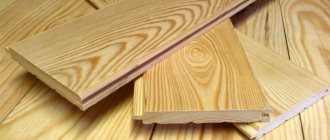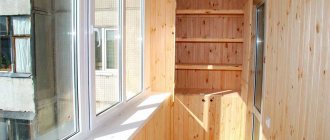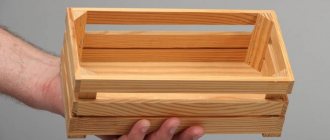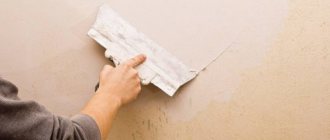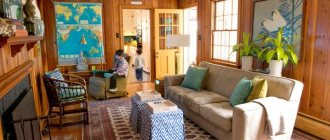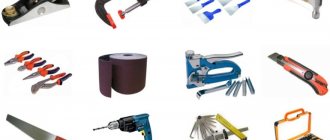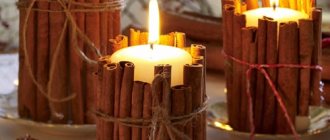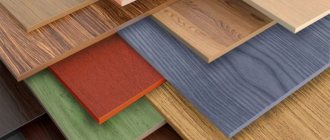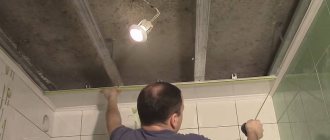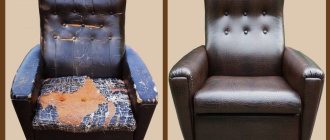Requirements for the design of a working wall in the kitchen
Without exception, all materials found in the kitchen must have good strength characteristics. This applies to furniture, work surfaces, and wall decoration.
In this room, especially when cooking, humidity and temperature increase. Surfaces often get dirty, so they must be made of durable, moisture-resistant materials that are easy to clean.
Wall panels in kitchen decor
The most common area for splashes from the stove and sink is the part of the wall between the countertops and the upper kitchen cabinets. To protect this area from external factors, it is recommended to cover it with a kitchen apron. Wall panels are easy to clean from grease, dust and other contaminants. In addition, this type of surface is resistant to fire, which is important when you have kitchen stoves with gas burners.
Wall panels are easy to clean from dirt
This type of finishing has the qualities necessary to maintain the kitchen in good condition:
- strength;
- safety;
- moisture resistance;
- wear resistance;
- ease of use.
A kitchen apron is the best option for decorating a work wall.
Decorative wall panels for the kitchen (photo)
The same decorative panels will look different in each room. We suggest you familiarize yourself with how you can decorate an apron in the kitchen.
Types of wall panels for the kitchen
If the upper cabinets in the room form a continuous block without gaps, then it is more rational to cover with a kitchen apron only that part of the wall that remains between the countertops and the top of the furniture. The design with a narrow stripe requires replacement if the owners decide to change the kitchen set.
Wall panels for kitchen apron
If open-type furniture structures are installed in the kitchen (for example, shelving without a door), then in this case it is recommended to cover the entire visible part of the wall with wall slabs. Thus, the panels can be installed from the floor or slab level to the ceiling. Tall structures are considered the most practical, as they allow free rearrangement of furniture.
Kitchen wall paneling
With a minimum amount of furniture or with a central arrangement of cabinets, a kitchen apron is used to decorate the walls from the floor to the hanging cabinets. This type of panel is called support and is also a practical option.
Depending on the installation method, the following types of wall panels for the kitchen are distinguished:
- tiled;
- mosaic;
- leafy;
- rack and pinion
Mosaic wall panels for kitchen
How the kitchen apron will be installed largely depends on the material from which the structural elements are made.
Different panels - different designs
Before choosing the ideal panels for your kitchen, let’s understand their types and classes. Depending on what models you need and for what, you will choose the optimal size, width and type of coating. The main difference between the panels is their size.
- Rack and pinion. Such products are similar to lining and, as a rule, are produced with a maximum width of 12.5 cm and a length of 3 meters. Most often, these wall models are made in a single color version. You won’t be able to find slatted models with brick or natural stone decor. They are chosen to replace expensive ceramic tiles. Rack and pinion models will cost an order of magnitude cheaper. In the photo below you can see an example of finishing a kitchen ceiling with slatted models.
- Tiled. These panels are produced in the form of small plastic tiles in two sizes - 30x30 and 98x98 centimeters. If you need a mosaic on the wall, tile products are a great solution. With their help, you can decorate both part of the wall and the apron area. The mosaic can have a solid look or be made with different patterns. It can also be a modular tile system, which includes products with different patterns. In this case, the mosaic can be compiled by you personally. You will combine and compose the image. The modular system is good for kitchens that are connected to the dining room. The following photo shows the interior of a kitchen using such panels.
- Leafy - the largest panels for the kitchen, which are considered a universal option. They can be used to cover the entire space or to decorate a work area. Sheet panels can be up to 4 meters long and up to 2 meters wide. In the photo below, look at the various ways to use such products.
- Composite . This type of panel deserves special mention. Of course, they are not used so often for the kitchen, and they are in demand in private homes. What do composite products look like? These are sandwich panels consisting of several layers. Their main advantage is that they can create good heat and sound insulation. But they have one drawback - composite products are not so rich in their color schemes. For example, you won’t find such panels with a three-dimensional pattern, but with a top coating like stone or dark brick, it’s quite possible.
The latter type of panels can successfully replace tiles in all respects - both in strength and in decor. It is clear that sheet models are best suited for cladding all walls. Due to their large size, they will be easier and faster to install. Also, such plastic products are distinguished by a variety of textures and colors.
Sheet panels can have a brick pattern, decorative stone, large images and floral patterns. But to decorate the apron area, it is better to choose tiled models, especially if you need small mosaics. The slatted type is most often chosen instead of wallpaper for the kitchen - they are similar in cost, but in terms of characteristics, plastic is more durable.
Materials used
Kitchen wall panels are made from:
- plastic;
- MDF, fiberboard, chipboard;
- plasterboard sheets;
- solid wood;
- ceramic slabs;
- metal sheets;
- glass fragments.
Each material has certain characteristics. Ceramics, metal, glass, and plasterboard have increased fire resistance.
Glass wall panels have increased fire resistance
All except the last one are also wear-resistant. Drywall and plastic are not flammable, but can melt when exposed to an open flame.
Wear-resistant plastic panels
Without exception, all materials, including wood and chipboard and MDF sheets, undergo special processing. Thanks to the impregnation and durable coating, such panels can be washed repeatedly. However, you should protect them from fire. The protective coating will have to be renewed over time.
Kitchen wall panels made of MDF
Plastic – a “brilliant” solution for the kitchen
The second most popular material after ceramic tiles. There is no point in comparing modern plastic panels with those that were used 10 years ago when finishing government buildings. Today this material has reached a new level. If tiles require wall preparation, leveling and lengthy installation, then plastic has one significant advantage - such a panel can be installed in a few hours.
Here are some more advantages of the material:
- The plastic apron for walls is easy to clean - you can use chemicals. In addition, you will see greasy stains and water stains immediately. By the way, old stains can also be easily washed off, since the structure of the plastic does not absorb dirt and grease.
- The material will survive constant exposure to moisture, splashes and steam. It, like tiles, is moisture resistant.
- You can choose different colors and textures. In its design, plastic can resemble wood and natural stone. It is enough to choose an interesting texture. The main advantage for a small kitchen will be the “glossy” quality of the material. By choosing a product with a shiny reflective surface, you can visually expand the room.
If you look at the following photo of the interior, where plastic was used to decorate the walls, you may be surprised how the panel conveys the texture of wood and attracts attention with variegated colors.
Now about the disadvantages. The only thing plastic is afraid of is high temperatures. If the tile can easily survive overheating, then plastic panels should not be placed near the stove. And one more thing - there is no need to wash kitchen panels with hard brushes and scrapers - you risk leaving scratches on the surface of the walls.
Features of plastic kitchen aprons
Plastic panels for kitchen work walls are among the most budget-friendly ways to decorate a work area, which is an undeniable advantage compared to other types of materials. Plastic has the following positive characteristics:
- Moisture resistance. The surface can be easily cleaned of greasy deposits using detergents. Also, the panels are not afraid of splashes from water and hot oil from a frying pan.
- Resistant to temperature changes. Plastic is not afraid of heat. However, it should not be exposed to open flame to avoid melting.
- External attractiveness. Plastic plates look no less high quality and stylish than products made from any other type of material.
- Practicality. This option can be made from a single sheet without the use of seams.
- Safety. In the production of plastic used for wall panels, synthetic components are used, but they are safe for human health. They are absolutely non-toxic.
Plastic panels are resistant to temperature changes
The disadvantages of this type of material include:
- susceptibility to the formation of scratches and abrasions (it is recommended not to use hard brushes or abrasive cleaners to clean the surface from greasy deposits and dust);
- stains from cleaning solutions and water (splashes from the sink when drying can leave unsightly marks and spoil the appearance);
- deformation from an open flame (high-quality plastic is resistant to high temperatures, but areas in contact with the stove or exposed to an open flame may melt);
- versatility (panels made of plastic material are suitable for decorating a kitchen in any style).
Plastic wall panels are suitable for any kitchen
When decorating a work area in a kitchen with a small area, it is recommended to use a transparent type of plastic. This solution visually expands the space. For more spacious kitchens, the use of opaque surfaces with different prints, plain or multi-colored colors is allowed.
Pros and cons of finishing with PVC panels
Finishing a kitchen with panels has its advantages and disadvantages over other methods. Let's look at them in more detail:
| pros | Minuses |
|
|
Kitchen wall panels made of MDF, fiberboard, chipboard
Manufacturers of kitchen aprons use all of the above materials. However, the most suitable option for a full-fledged kitchen is fiberboard sheets. MDF and chipboard sheets can be used for decorative purposes. Without exception, all canvases are additionally treated with special means to improve strength indicators.
Kitchen wall panels made of MDF
The fiberboard is covered with thin plastic. This solution allows you to protect the material from moisture.
The benefits also include:
- relatively low cost;
- resistance to mechanical stress;
- possibility of self-installation.
Kitchen wall panels made of chipboard are resistant to mechanical stress
The disadvantages include the fact that this type of structure cannot withstand increased weight load. You should not install hanging cabinets, shelves and other pieces of furniture to fiberboard panels.
Recommendations for selection
PVC wall panels are most often used to decorate the work area. Since the coating next to the sink and stove must be cleaned regularly, the main selection criterion is the resistance of the coating to wear.
It should be noted that all high-quality PVC coatings, with proper care, retain their original appearance for a long time. Wall decoration should be in harmony with the overall style of the room and match the color of furniture, curtains, and household appliances.
When choosing a suitable covering, it is necessary to take into account the size of the room. If the kitchen is small, preference should be given to light colors - they will make the room more spacious. A large pattern is quite appropriate for the kitchen apron area, but it must be combined with a plain finish on the remaining walls.
White color is also quite appropriate in a small kitchen, but it is used in doses. It is better not to use tiles with a relief structure in the work area, since it is quite difficult to clean them from dirt.
Ceramic kitchen apron
Tiles or mosaics are the most optimal option for decorating a work surface in the kitchen. It combines two important qualities - practicality and relatively low cost. This coating will last for many years and will not lose its visual appeal.
Ceramic wall panels for kitchen
Ceramic kitchen wall panels can be manufactured in the form of:
- tiles of various sizes;
- mosaics;
- border tiles and other shapes.
Ceramic wall panels for the kitchen are not afraid of moisture
The only condition for using this option is that the space between the tiles should be treated with a special stable putty, which is matched to the basic tone of the products.
Mosaic or tile masonry is not afraid of moisture, fire, mechanical and chemical influences. The surface can only be damaged by a strong blow.
Photos in interiors
All types of vinyl flooring are great for kitchens. With adhesive PVC tiles or SPC laminate, you can even install a single flooring in the kitchen, hallway, bathroom, toilet. Without thresholds and breaks. Vinyl flooring is a practical and modern alternative to porcelain tiles. A floor that can be laid on top of tiles, which is very convenient.
Subscribe to the mailing list of new articles and reviews from Doctorfloor.ru
The editors do not claim to have the only correct and correct opinion regarding the use of PVC floor coverings in the kitchen. If you think that you have more professional, complete and reliable information, contact us by e-mail [email protected] or through the feedback form in the Contacts section. We will be grateful for your help in filling the resource!
Similar articles
Vinyl wall tiles: choice in…
PVC tiles for the nursery: comfort and…
Quartz vinyl tiles in the bathroom: finishing with…
Quartz vinyl tiles on the balcony: a stylish area…
Quartz vinyl and SPC flooring Alpine…
Glass work area
The use of glass in the interior always looks modern and stylish. The advantage of this type of material is hygiene. The glass work surface is the easiest to care for due to the absence of seams and joints.
Glass wall panels are easy to care for
Glass is notable for the fact that it allows you to implement the most daring design solutions. Behind the glass panel you can place posters and photo wallpapers. The design can be applied to the glass itself using various techniques:
- stained glass painting;
- acrylic paints;
- photo printing;
- sandblasting;
- gluing a special film, etc.
You can apply any design to glass wall panels for the kitchen.
For the manufacture of kitchen wall panels, only tempered glass is used. To enhance strength, some models are coated with a thin layer of protective film. Upon impact, the glass may simply crack, but not shatter into small fragments.
Finishing kitchen surfaces
The finishing of walls, floors or ceilings with PVC panels is preceded by the purchase of building materials. Considering the need for pruning and culling, it is better to purchase materials with a small supply. When it comes to panels, they are always secured to the sheathing. Installation of plastic tiles is most often done using glue.
Required Tools
When starting the process of finishing walls with plastic, you should prepare the following tools and materials:
- spatula for dismantling the old coating;
- a hand saw equipped with a saw with fine teeth for cutting tiles;
- narrow notched spatula for applying glue;
- primer brush;
- rubber roller.
If adhesive has already been applied to the tile, installation is carried out after removing the protective layer.
Preparatory work
Before pasting the wall, you need to clean it of the old coating. The wallpaper is first removed using a spatula, the layer of paint or plaster is removed with a drill with a special attachment.
If necessary, the surface is leveled with putty, cleaned and primed. To make cleaning the room easier after work, it is recommended to remove all furniture and cover the floor with film.
Laying methods
Experts distinguish several methods of attaching PVC tiles. The first involves fastening the elements to the sheathing. To fix the elements, nails, screws and staples, clamps held by nails, or glue are used.
Lathing allows you to install the covering without first leveling the walls. Fastening plastic panels with glue is a simple option that you can do yourself.
It is suitable for all types of surface. The main condition is the absence of irregularities. If there are surface imperfections, the joints of the tiles may diverge noticeably, which will spoil the appearance of the finished coating.
Kitchen apron made of metal sheets
Metal is the most durable type of material that is not subject to any impact. However, this option is applicable only in an interior in a minimalist or high-tech style.
Kitchen apron made of metal sheets
The metal has only two textures - glossy and matte. But their proper combination allows you to create a stylish and modern look for the kitchen. For harmony in the interior, the rest of the furniture should also have metal elements.
Metal wall panels for a high-tech kitchen
Tempered glass panels: a stylish option for the kitchen
These types of panels have been at the peak of popularity for several years now. They are chosen for both classic cuisine and kitchens in the Art Nouveau, Provence, retro and hi-tech styles. All this is because glass is a universal material in terms of creating design.
If you look at the photos of interiors where such wall protection was used, we note that each model is unique. Some panels are full of designs in the form of flowers and fields, others are made in the form of a night city, and still others are stylized as antique. Moreover, you can place a photo of your family or your own drawing on the glass.
These wall panels have the following advantages:
- Tolerates high temperatures. These panels can be installed on the wall near the stove without fear.
- They have excellent moisture resistance. Constant exposure to moisture, steam and splashes will not affect the appearance and characteristics of the glass. Even the drawing will not lose its beauty, will not fade or be erased.
- The glass is easy and quick to clean. The most important thing is that such a panel can be cleaned with brushes and powders. Scratches will only remain under strong external influence. Moreover, when you need to wash away greasy stains and you can’t do without a brush, glass will endure all the “torture” here too.
In general, glass panels are an ideal choice for the kitchen. True, they will not be cheap. You can compare this material with natural stone and expensive tiles, especially if you choose a product with photo printing or 3D skins.
Wooden wall panels
Natural or veneered wood is used to decorate kitchens. Natural material is environmentally friendly and safest for humans.
With its help you can create a cozy and warm atmosphere. Wood is perfect for any interior style. With the help of products of various shapes and sizes, you can implement the most daring design solutions. Wood can be used in the form of simple, alternately laid slats, or an image can be laid out from small elements of various shades.
Wooden wall panels for kitchen
Regarding cost, the building materials market offers options for any budget:
- inexpensive - pine, linden, alder;
- more durable, expensive - oak, cedar, others.
Solid wood must be treated with wax on all sides. Impregnation protects the product from moisture, insects, and light mechanical impact. To increase durability, the surface is also coated with a layer of varnish. But over time, the protective coating will need to be updated.
The protective coating on wooden wall panels needs to be renewed.
It is better not to place wooden elements of the work area near hot surfaces or open fire. During operation, microcracks form on the protective coating. It is important to varnish the wood in a timely manner so that the structure of the material does not deform under the influence of moisture.
Wooden elements should be protected from constant exposure to moisture. They can be washed, but water should not be allowed to stagnate, especially near the joints. Do not apply detergents containing chlorine to the surface. The substance may damage paintwork.
Wooden wall panels must be protected from moisture
The disadvantages of this type of design also include the relatively high cost of material and assembly price.
Types of plastic tiles
The composition of vinyl tiles is similar to linoleum. It contains:
- acrylic resins;
- filler;
- stabilizer;
- coloring pigments;
- plasticizers.
The binding element is polyvinyl chloride.
Plastic is a hygienic and moisture-resistant material, which determines the possibility of its use in kitchen decoration. PVC coating was developed as an alternative to expensive ceramics.
Manufacturers offer a wide selection of materials in this category, differing in size, technical characteristics, design and application possibilities.
Modern PVC tiles are used as floor, wall and ceiling coverings. Based on the type of installation, coatings are usually divided into three types:
- with a lock (tongue-and-groove fastening);
- self-adhesive;
- mechanically secured.
Polyvinyl chloride tiles can have a smooth or corrugated surface.
Vinyl wall tiles come in a variety of shapes and sizes. Elements can be square or rectangular. The minimum size of elements is 457 x 457 mm.
The tiles are produced by pressing polymers with the addition of polyvinyl chloride. The surface of the tile can be single or multi-layered. In the latter case, the top layer is made of polyester or polyurethane.
Criteria for choosing kitchen wall panels
When choosing this type of design, you should pay attention to the following points:
- Product quality. When inspecting demonstration models, it is necessary to make sure that the entire structure is of high quality. Particular attention should be paid to the joints. The material must be processed evenly on all sides.
- Build quality. If the installation of the structure is carried out by a company, it is necessary to ensure that there are no large gaps between the elements. All joints must be made with high quality. In the case of tiled masonry, it is important to properly putty the distance between the tiles.
- Guarantee. A conscientious contractor provides a guarantee for all types of work performed. If fragments of the coating were damaged during transportation or installation, it will be replaced at the expense of the company.
- Price-quality ratio. Budget options for kitchen aprons are ideal for decorating a kitchen where you don’t have to cook often. If the working area is fully used, it is better to give preference to more durable models made of reliable, wear-resistant materials.
Before purchasing kitchen wall panels, check the build quality
All kitchen aprons, except tiled ones, are mounted at a distance of 2-3 cm from the wall. This is necessary in order to ensure natural air circulation and prevent the formation of condensation and mold.
Wall panels for the kitchen are a convenient, practical, modern and stylish option for decorating a work area. Kitchen aprons will not only complement the interior of the room, but also protect the wall from the influence of moisture, cleaning products and temperature changes.
Features of the color of PVC panels
The plastic panels also differ in the way they apply the pattern, since the base of the plastic itself is white. How do wall panels become colored?
- Using thermal film. When making such models, the PVC surface is treated with a special solution, and then covered with a film using a roller. This application of the top layer ensures the strength and durability of the product. The film covers both sheet and tile types of panels. Thanks to it, you can choose beautiful and unimaginably bright drawings. For example, mosaics can be made on thermal film. Panels with this coating are distinguished by a variety of colors and are superior in range to ceramic tiles. In the next photo, look at the kitchen design, where a plastic apron with photo printing on film is installed.
- Using direct printing. This type of coating differs in that the design is applied directly to the white panel, then it is treated with varnish and dried. They choose such models instead of the usual wallpaper - they look harmonious and add sophistication to the room. But the main disadvantage of direct printing is its sensitivity to mechanical damage. Using this printing method, mosaics, floral patterns and bright prints can be made. But products with a stone look or with a brick pattern are best chosen in the thermal film version. The photo below shows the kitchen interior, where simple panels with color images were used.
- Using lamination. Such a PVC sheet will be highly durable due to the fact that the top layer here is another “level” of plastic. Such wall panels will last a long time, and they can even be cleaned with chemicals. They are chosen when you need to decorate the apron area with the most reliable material. These models are produced in different colors, but their main advantage is the ability to order a pattern. If you want to decorate your work area with a fashionable image that resembles cracked brick or expensive stone, lamination will allow you to do this. Look at the following photo for an example of kitchen cladding with catchy and memorable panels.
As for the cost of different PVC products, sheet models with lamination are considered the most expensive. In terms of price, they can easily “catch up” with tiles. But panels with direct printing and thermal film will cost less.
When choosing PVC panels, focus on the strength and decorative properties of the products. For example, both sheet and tile models are suitable for finishing the apron area. If you need to save money, the best option for covering walls would be plain slatted panels. The glossy shine of the coatings will visually expand the space, and fans of the Art Nouveau style or laconic high-tech can choose products coated with a metal-like film.
Photo gallery - wall panels for the kitchen
Three alternative solutions: wood, stone and postforming
What other panels are there? In addition to tiles, MDF and glass, you can choose the most expensive wall panels - made of wood and stone. Or pay attention to a new trend in design - postforming products.
- Wooden panels. Yes, for a kitchen in eco-style or country style, you can choose models made of natural wood. They look respectable and will certainly create the right atmosphere. True, wood does not tolerate constant humidity well. This material is easily deformed. It is not recommended to wash the panels very often, as the wood structure may be damaged. Of course, today panels are covered with special coatings and wax, which protect the surface and extend the life of the products. If you are choosing kitchen panels for a room where you do not plan to spend a lot of time and cook frequently, wood can be called the most luxurious option.
- Artificial stone panels. Another respectable and durable material is stone, which is often chosen for kitchens in a classic style. This panel will last a long time due to its characteristics: the stone is not afraid of moisture and temperature changes; it can be washed with chemicals, and scratches will not remain even when using scrapers. In addition, the stone will appeal to all fans of environmentally friendly materials. The only drawback of the material is the difficulty of installation. The stone is difficult to cut, and you will have to tinker with it. Such a panel will not be cheap - artificial stone is considered one of the most expensive finishing materials.
- Postforming. Such products are made from chipboard sheets, but have one feature - a plastic front covering (like plastic facades). That is, you get the strength of chipboard and the practicality of plastic. Postforming products can be installed near the stove - they are not afraid of high temperatures and moisture. Cleaning the panel is also easy - use gels, and abrasives for difficult stains. Another advantage of postforming is the variety of color and design solutions. If we compare laminated chipboard and postforming, the latter wins with its original patterns and textures. As for the cost, such panels are more expensive than conventional plastic and laminated MDF.
Which wall panel option should I choose? Glass and all natural materials can easily be called the leader. True, such finishing will not be cheap. When choosing, give preference to those kitchen products that are easy to clean, especially for areas near the stove and sink. Pay attention to moisture resistance and ease of installation.
